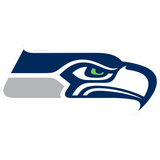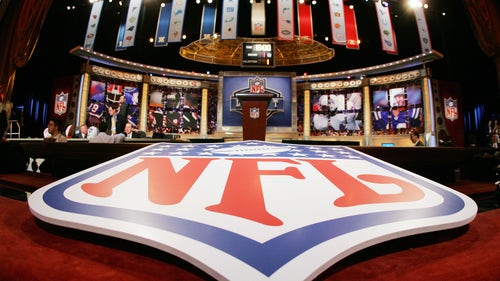
Inside the biggest injuries of Week 3 around the NFL
Dr. Anand Lalaji, a sports orthopedic radiologist, has a passion for sports and medicine. A little over two years ago, “Dr. A” began publishing a simple blog covering the injuries of professional athletes across all sports. His mission: to help consumers and fans understand, in simple terms, what type of injury the athlete sustained and how the injury might impact the athlete’s future performance. Dr. A's blog gained momentum and attracted so many users during the 2014 World Cup that his site crashed. He knew he had found an audience eager for injury information. In 2015, Dr. A pulled together a small team, and Inside Injuries was born.
The Inside Injuries algorithm has analyzed over 2,022,583 data points across 172,068 injuries with a 68.3% accuracy rate. The algorithm that powers Inside Injuries was built by orthopedic surgeons, sports medicine specialists and data scientists. The injury analysis done at the player level is completed by examining all available data on a player’s injury and combining that data with the player’s injury history along with a multitude of other data points, including the player's position, age, number of years in the league, orthopedic literature and a number of proprietary elements. The outputs of the analysis are an Injury Risk Category (IRC) and Health Performance Factor (HPF) for each athlete. The IRC tells a fan how likely it is that an athlete will be injured again in the next game. The HPF indicates how well an athlete will likely perform in the next game. The algorithm is constantly improving as the database of injuries, data points and results grows and the auditing of the physicians, sports medicine experts and data scientists involved continues.

Many fans have found the Injury Risk and Health Performance Factor stats helpful at a time when injury reporting by the league and the teams is often ambiguous. Currently, Inside Injuries is focusing on producing injury statistics for the NFL, and has made these available on its mobile app. The company plans to start coverage of the NBA later this fall, and then to move into baseball and soccer in the spring. Football fans and fantasy players are currently using the Inside Injuries app to check on the injury status of their favorite players and help determine who to start and who to sit every week. Inside Injuries will be providing unique injury context and projections for key players every week.
Week 3 was much quieter on the injury front than the week before, but there are still some notable updates to cover. But first, a scale for interpreting our two metrics:

Russell Wilson: MCL sprain
The Seahawks’ quarterback has landed on the injury report for the second time this year. In Week 1, Wilson sprained his right ankle in a win over the Dolphins but fought through to finish the game. He was limited in practice all week, and some reports indicated he had a high ankle sprain that would need multiple weeks to heal, but he was able to play the next Sunday.
Wilson went down with another injury against the 49ers, this time to his left knee. An MRI later confirmed the MCL sprain. Coach Pete Carroll and Wilson have both expressed confidence that he will be able to play in Week 4, but we will have to monitor his progress throughout the week. Playing with injuries is new to Wilson, and we don’t know much about how his body will respond.
A lingering right ankle sprain and a left MCL sprain is tough for a quarterback to play through, especially one like Wilson who relies on his feet to set up his playmaking ability. The Inside Injuries algorithm now lists Wilson as having a Grade 2 ankle injury and a Grade 2 knee injury.
Getting Wilson healthy has to be a top priority for the Seahawks if they want to make a Super Bowl run.
Overall injury risk: 4.39% Health Performance Factor: 79.08%

Dez Bryant: Knee injury
Early in the first quarter of the Cowboys’ Sunday night victory, Bryant’s leg bent awkwardly as he was tackled by Bears linebacker Christian Jones. He limped to the sideline but was soon able to return to the game. He finished with just three catches for 40 yards but was able to find the end zone, so his day wasn’t a total loss.
Despite playing through the injury, Bryant will undergo an MRI to assess the severity of his knee injury. The hope is that nothing shows up and he’s cleared to play in Week 4, but ligament or cartilage damage remain a possibility. Based on the way his knee moved, a meniscal tear is most likely. Even if there is no cartilage tear, he could still be out for three or four weeks. If there is a meniscal tear, he could be looking at a recovery time of 8–12 weeks for a Grade 3 injury.
The last thing this team needs is another serious injury to Bryant. His 2015 season started with a foot fracture that forced him to miss half of the year and ended with lingering foot and ankle problems. He’s still one of the league’s elite receivers, but his numbers have been mediocre through three games: 11 receptions, 150 yards and one TD. If there’s any damage to his knee, he could be in for another frustrating season.
The Cowboys are already playing with rookie quarterback Dak Prescott as Tony Romo works his way back from another back injury. Losing Bryant for any significant amount of time would be a huge loss for the offense.
Overall injury risk: 25.76% Health Performance Factor: 65%
Shane Vereen: Torn biceps
While the surgery to repair Vereen’s torn biceps could be season-ending, his recovery time can be as short as two months, so the Giants could use their short-term IR designation on him. Rashad Jennings missed Week 3 with a thumb injury but could be back Week 4 to reclaim his lead back role in New York.

Jeremy Langford: Ankle sprain
The Bears’ starting running back was carted to the locker room after injuring his ankle in the third quarter. He was seen wearing a walking boot following the game, and ESPN’s Adam Schefter reported that the team expects him to miss 4–6 weeks.
Michael Floyd: Concussion
During Sunday’s loss, Floyd was removed from the game to be evaluated for a head injury, but an independent neurologist cleared him to return to the field. He has entered the league’s concussion protocol, so he must have experienced symptoms following the game. It’s possible, but not guaranteed, he is cleared in time to play next Sunday.
Manti Te’o: Torn Achilles
Te’o has had an injury-plagued start to his career, and his recent injury is the most serious yet. He tore his Achilles tendon on a non-contact play and will undergo season-ending surgery. He also had a foot fracture that forced him to miss much of the 2014 season.
DeAngelo Hall: Torn ACL
After making a tackle in the second quarter, Hall limped off of the field and was unable to put any weight on his right leg. An MRI confirmed a torn ACL that will end his season.

Jordan Cameron: Concussion
Jordan Cameron is no stranger to concussions. The Dolphins tight end picked up yet another one on Sunday, and each time a player has a concussion it becomes more serious. That makes four concussions in four years—very concerning.
Thomas Rawls: Fibula fracture
In addition to an injured quarterback, the Seahawks also will be missing their starting running back. Rawls was listed on the injury report with a shin injury from Week 2 that was originally described as a bruise, but we have now learned it is a hairline fracture. He will miss at least a couple more weeks while it heals. I suspect the recovery time will be at least a month and possibly six weeks.
Rawls had an ankle injury in 2015 that ended his season, even though it wasn’t originally believed to be too serious, so he could be a slow healer. He currently falls into the high risk category at poor HPF because of his injuries. The Seahawks will again turn to Christine Michael, who has impressed when given the opportunity and rushed for 106 yards and two touchdowns Sunday against the 49ers.
Overall Injury Risk: 40.3% Health Performance Factor: 28.92%
This article originally appeared on










